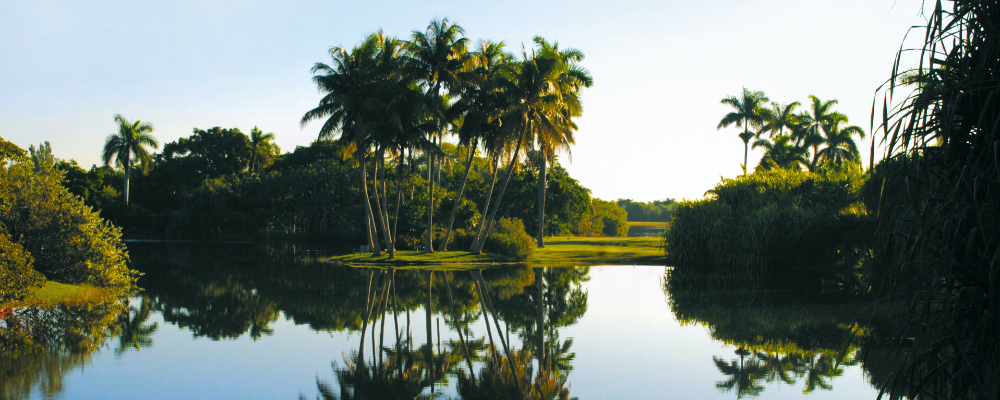Landscape Design

The landscape architect who designed Fairchild was William Lyman Phillips. He was born in 1885 in Massachusetts, and he obtained his landscape architecture degree from Harvard in 1910. His incredible talents landed him a position with the highly regarded landscape architecture firm, Olmsted Brothers. At the age of 25, he began a long association with Frederick Law Olmsted, one of the most outstanding landscape architects in America. In the ensuing years, Phillips worked in the Panama Canal Zone, Puerto Rico, France, Italy, Switzerland, and Germany. In 1924, he arrived in Florida and in 1933, he started working with the Dade County Parks Department on Greynolds Park and Matheson Hammock Park.
The Landscape Plan
Phillips wrote to Robert Montgomery in December of 1938 with ideas of what a botanical garden could be and how its development could be approached. Phillips became Fairchild’s landscape architect and remained in that position until 1963. He designed the entire Garden, including the Palmetum, which he designed around plots designated for planting based on the genus of palms. He designed the Arboretum section of the Garden based on grouping by families.
Families represented in the Arboretum were based on a list of plants growing in the Botanical Garden of the Atkins Institution in Soledad, Cuba. The entire upland portion of the Garden consisted of 23 acres,including the Palmetum and the Arboretum. Except for the formal elements in the design of the Overlook, its Allée, and the Bailey Palm Glade, Phillips gave the upland portion an informal design treatment, requiring no specific form or character in the vegetation masses. Phillips wanted the plants to vary in kind and size through the years to allow freedom in the choice of plant material. He believed that any formality would limit choice by demanding specific size and form. Only the formal elements, such as those found in the Palm Glade, the Amphitheater, and the Overlook, demanded a certain uniformity of vegetation, which Phillips felt had little to do with the general purpose of creating a botanical collection.
Phillips designed the shape and size of the plots and topography of the Uplands, the Lowlands, and the slope between. In the Arboretum, a system of terraces and stone walls was created to retain fill. To mitigate possible damage from northeast winds in the winter, Phillips planted trees to form a windbreak and made passages between the plots devious to further deflect the wind. A stand of oaks north and south of the Palm Glade provided a good windbreak on the Palmetum side. He designed the Overlook Allée so that sweeping views opened to the left and right, continuing to the Overlook terrace, which offered a very wide vista. The plan for the Lowlands was an articulated complex of openings.
Phillips felt that well-defined openings provided a sense of organization and had a striking visual effect. Open spaces could be compared to rooms and corridors in a gallery, where the walls display items. The Uplands’ 23 acres imposed space limitations, allowing only for small scale openings no wider than lanes or walks. Phillips believed that small landscape areas and close views of the plants were more attractive than wide views, and that walks in the shade would be more agreeable than walks in the sun. The Lowlands provided much larger openings and bolder views. The lakes would constitute inviolable open spaces.
On the surface, Phillips’s plan did not appear organized, but there was a clear purpose and set of guiding principles behind every element of its design. The principles included:
Variety
No two openings between planting masses or plots are alike; they differ in length, width, shape, orientation, and character. There are only a few points from which any great portion of the Garden be seen, and the visitor is led from point to point on a journey of discovery. The openings were and remain the vital elements of Phillips’s plan.
Consistency
The pattern is of a piece. The lines and shapes are dominantly free, casual, and irregular, favoring a natural randomness in planting.
Contrast
There is contrast between large and small openings and masses, between sunny and shady passages, and between the close, intimate views on the Upland and the broad open views on and over the Lowlands. The Overlook is thrust out over the lower edge of the slope, yielding panoramic views. The Palm Glade terrace is set back on the upper edge of the slope, yielding deep and narrow views.
